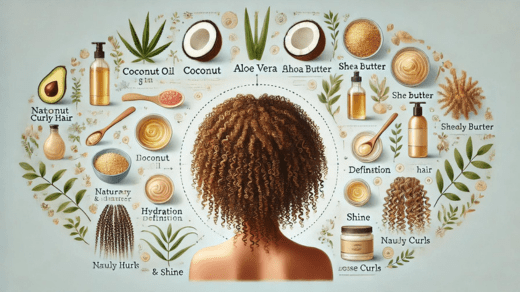How To Get Naturally Curly Hair?
Naturally curly hair is a unique and captivating feature that many people embrace and celebrate. However, the reasons behind why some individuals have curly hair while others do not are rooted in complex genetic and biological factors. In this two-part series, we’ll explore what causes naturally curly hair, starting with the scientific foundations in Part 1.
The Role of Genetics in Naturally Curly HairGenetic Inheritance and Curly Hair
Genetics plays a crucial role in determining hair type, including whether hair is curly, wavy, or straight. The shape of the hair follicle and the distribution of certain proteins are influenced by genetic factors inherited from both parents. If one or both parents have curly hair, there is a higher likelihood that their offspring will also have curly hair.
Key Genes Involved in Curly Hair
Several genes are involved in the development of curly hair, with some of the most significant being:
- Trichohyalin (TCHH): This gene plays a crucial role in the structure of hair follicles. Variations in the TCHH gene can influence the shape of the hair strand, contributing to curliness.
- EDAR: This gene affects the development of hair follicles and can influence hair texture and thickness. Certain variations in the EDAR gene are associated with wavy or curly hair.
The Biology of Curly Hair
Hair Follicle Structure
The shape and structure of the hair follicle largely determine whether hair is curly or straight. Curly hair follicles are typically oval or asymmetrical, while straight hair follicles are round. The degree of curliness is influenced by the curvature and asymmetry of the follicle.
Protein Composition in Hair
Hair is composed of a protein called keratin. The arrangement and bonding of keratin molecules can affect hair texture. In curly hair, the keratin proteins form more disulfide bonds, which create the bends and twists characteristic of curls. The distribution and density of these bonds play a crucial role in determining hair shape.
Environmental and Hormonal Influences on Curly Hair
Climate and Humidity
Environmental factors, such as climate and humidity, can significantly impact the appearance and behavior of curly hair. High humidity can cause curly hair to become frizzy and more defined due to the absorption of moisture from the air. Conversely, low humidity can make curly hair appear flat and less voluminous.
Hormonal Changes
Hormonal fluctuations, particularly during puberty, pregnancy, and menopause, can alter hair texture. Hormones like estrogen and progesterone can affect the size and activity of hair follicles, leading to changes in curl pattern and hair growth.
The Science of Hair Growth and Curl Pattern
Hair Growth Cycles
Hair growth occurs in cycles, with each strand undergoing a growth phase (anagen), a transitional phase (catagen), and a resting phase (telogen). The duration and characteristics of these cycles can influence hair length, thickness, and curl pattern.
Cellular Activity in Hair Follicles
Cellular activity within the hair follicles plays a significant role in determining hair texture. The shape of the follicle opening, the arrangement of cells, and the distribution of keratin all contribute to the formation of curly hair.
The Impact of Ethnicity on Hair Texture
Ethnic Variations in Hair
Different ethnic groups often exhibit distinct hair textures and curl patterns. For example, individuals of African descent are more likely to have tightly coiled or kinky hair, while those of European descent may have a wide range of textures from straight to wavy. These variations are influenced by genetic differences and evolutionary adaptations.
Evolutionary Perspectives
From an evolutionary standpoint, hair texture may have adapted to different environmental conditions. For instance, tightly coiled hair can provide better protection against UV radiation and heat, which could be advantageous in certain climates.
Conclusion
Our exploration into what causes naturally curly hair, we’ve delved into the genetic, biological, and environmental factors that contribute to this unique hair texture. Understanding the science behind curly hair can help us appreciate its beauty and complexity. where we’ll discuss practical tips for caring for naturally curly hair and embracing its natural texture.

